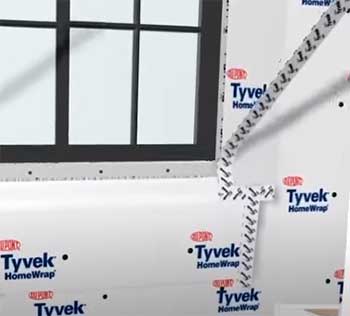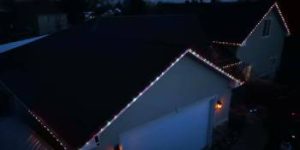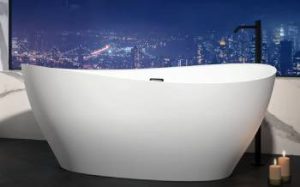When constructing or renovating a home, it’s paramount to ensure that it’s shielded adequately from the elements. This is where housewraps come into play, acting as a protective skin to prevent water and air infiltration.
Two popular options on the market are HydroGap and Tyvek housewraps. But how do these two fare against each other? Well, let’s dive into the world of HydroGap and Tyvek housewraps.
A Brief Comparison Table
| Features | HydroGap | Tyvek |
| Moisture Management | Excellent bulk water shedding capabilities | Provides water resistance but not focused on bulk water |
| Breathability | Highly breathable, allowing moisture to escape easily | Breathable but less so compared to HydroGap |
| Air Infiltration | Acts as an air barrier but not as focused on air infiltration resistance | Excellent air infiltration resistance, contributing to energy efficiency |
| Cost | Tends to be pricier due to advanced features | More affordable than HydroGap |
| Installation | Requires careful installation for optimal function | Easier to install but still needs attention for optimal performance |
What’s in a Name: HydroGap

Let’s begin our journey with HydroGap, a relatively new but fierce contender in the housewrap market.
Its main function is to create a breathable barrier that can effectively shed bulk water away from the exterior walls, hence the name ‘HydroGap’.
The ‘gap’ here is a physical, three-dimensional space created by the product’s unique design.
This space allows for a quick and efficient drying process if any water does get past the cladding, keeping your house dry and your worries at bay.
The Veteran: Tyvek Housewrap
Opposing HydroGap is the tried-and-true Tyvek housewrap. Tyvek, a product of DuPont, has earned its place as a staple in the industry.
Like HydroGap, Tyvek acts as an air and water barrier, but its design focus is largely on creating a tightly sealed home. Its strong suit is its exceptional ability to limit air infiltration, thus enhancing the overall energy efficiency of the house.
The Good and the Bad of HydroGap
Pros:
- Optimal Moisture Management: HydroGap’s standout feature is its ability to effectively shed water, thanks to its distinctive spacer design. This makes it an excellent choice in regions with high rainfall.
- Breathability: HydroGap is a breathable housewrap, which means it allows water vapor to escape, reducing the risk of mold and water damage.
Cons:
- Cost: HydroGap tends to be more expensive than other housewraps, including Tyvek.
- Installation: The product requires careful installation to ensure the drainage space functions correctly.
Weighing the Pros and Cons of Tyvek Housewrap

Pros:
- Superior Air Infiltration Resistance: Tyvek is renowned for its air-sealing capabilities, which can help homeowners save on energy costs.
- Durability: It is made of high-density polyethylene fibers, making it resistant to tears and damage from installation.
Cons:
- Water Management: While Tyvek does repel water, it may not manage bulk water as effectively as HydroGap.
- Less Breathable: Compared to HydroGap, Tyvek is less breathable, which can potentially trap moisture inside the walls.
Key Differences Between HydroGap And Tyvek Housewraps
Now that we’ve acquainted ourselves with HydroGap and Tyvek housewraps, and their respective strengths and weaknesses, it’s time to highlight the key differences between these two industry competitors.
- Moisture Management
One of the primary differentiators between HydroGap and Tyvek is the way they handle moisture.
HydroGap was designed to tackle excess moisture head-on. Its unique drainage space helps it shed bulk water away from the exterior walls.
This means, in the event of a torrential downpour, HydroGap is prepared to take the hit, preventing water from seeping into your home.
On the other hand, while Tyvek does provide water resistance, its design doesn’t emphasize bulk water management as much as HydroGap does. However, it does keep out wind-driven rain and snow, a valuable feature for homes in colder climates.
- Breathability
Both HydroGap and Tyvek are breathable barriers, but the degree of breathability varies between them.
HydroGap is designed to allow moisture to escape from the wall cavity, reducing the risk of mold and water damage, while Tyvek’s lower level of breathability means it is slightly more likely to trap moisture inside the walls.
This difference can play a significant role in areas with high humidity or heavy rainfall, where moisture buildup in walls could be a concern.
- Air Infiltration
Tyvek takes the lead in air infiltration resistance. It shines in its ability to limit air movement through the building envelope. This characteristic contributes to Tyvek’s exceptional energy efficiency, helping homeowners save on heating and cooling costs.
HydroGap, while also acting as an air barrier, doesn’t emphasize air infiltration resistance as much as Tyvek does.
- Cost
When it comes to cost, Tyvek is typically the more affordable choice. HydroGap tends to be a pricier option due to its added moisture management features.
Installation
Lastly, installation methods and requirements can also vary between the two. HydroGap needs to be installed carefully to ensure the drainage space functions correctly.
In contrast, Tyvek is relatively easier to install but still requires attention to detail for optimal air infiltration resistance.
Also Read: Differences Between Blueskin VP100 And Tyvek Housewraps.
Frequently Asked Questions (FAQ)
HydroGap is used as a breathable, water-resistant barrier in building construction. Its primary function is to protect a building’s sheathing from water damage by effectively shedding bulk water away while still allowing water vapor to escape.
No, HydroGap is not a vapor barrier. It is, in fact, a breathable housewrap. It allows moisture to escape from the wall cavity, ensuring a healthier, dryer, and less prone to mold and rot structure.
Yes and No. HydroGap functions as a weather-resistant barrier and has a built-in drainage space similar to a rainscreen, but it doesn’t replace a full rainscreen system. It helps shed water away from the building, much like a rainscreen would, but for maximum protection, some constructions may still need a separate rainscreen system.
HydroGap is a housewrap product designed to act as a water-resistant barrier, effectively draining bulk water away from a building’s exterior walls. It is made with a breathable material, which allows moisture to escape, helping to prevent water damage and mold growth.
Wrapping Up
In conclusion, when it comes to choosing between HydroGap and Tyvek housewraps, consider your specific needs and the climate of your location. Both have their strengths and limitations, and understanding these will help you make the best choice for your home.



